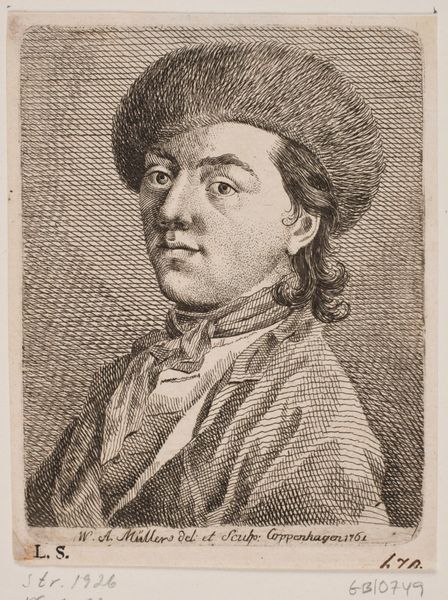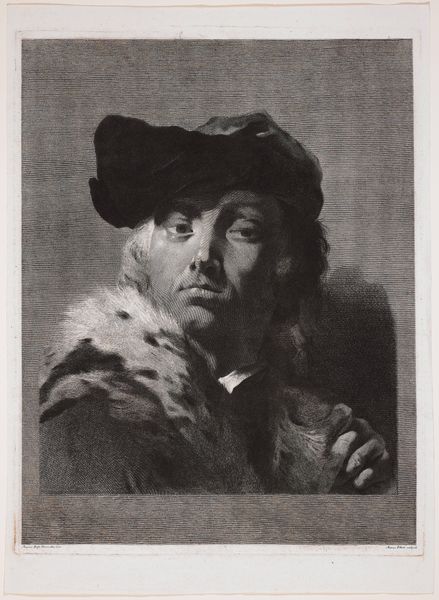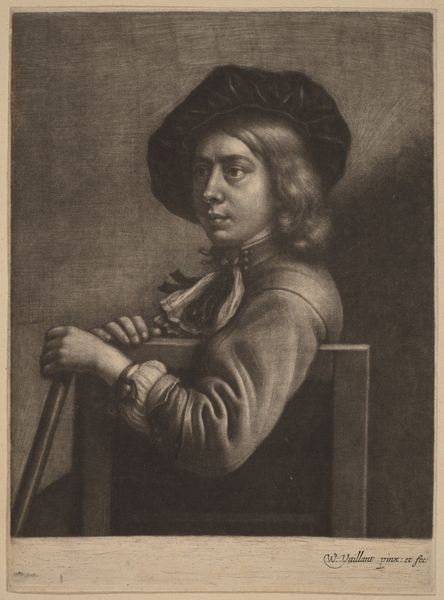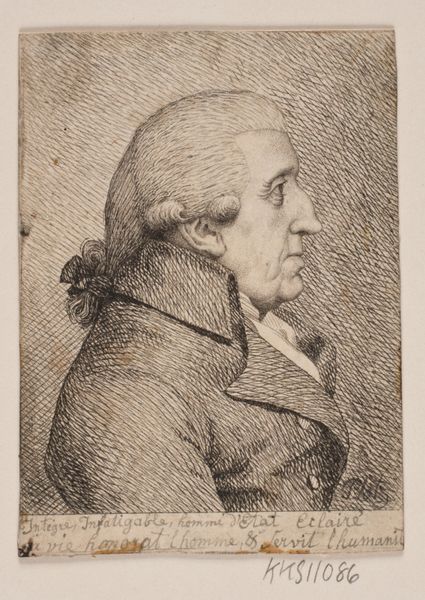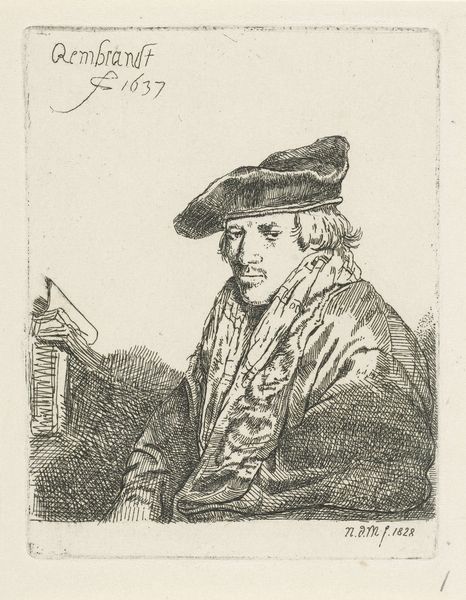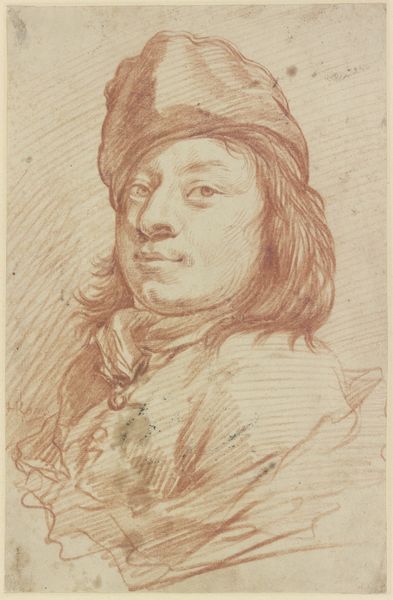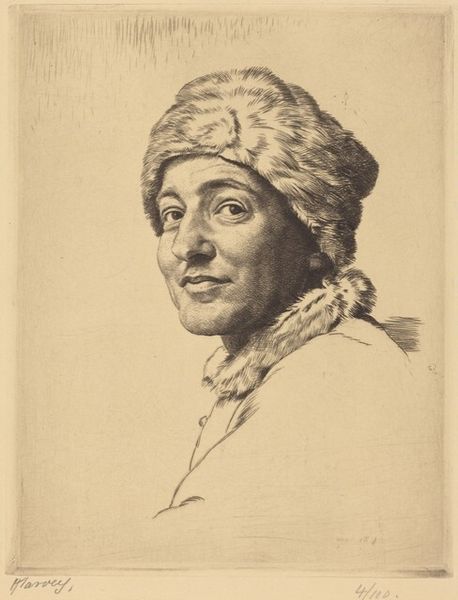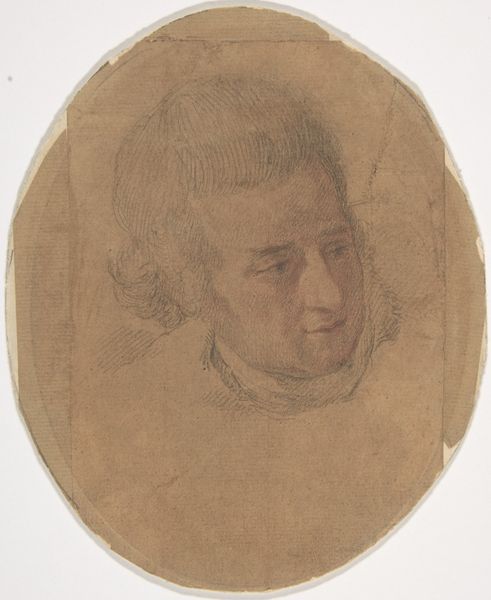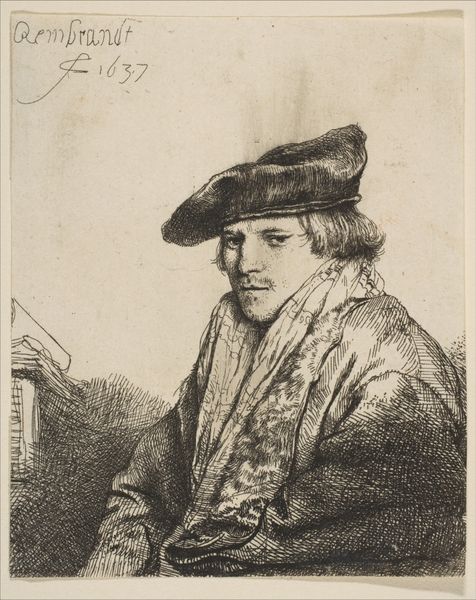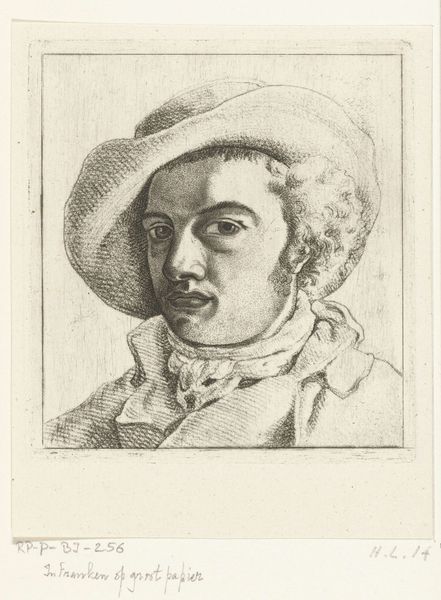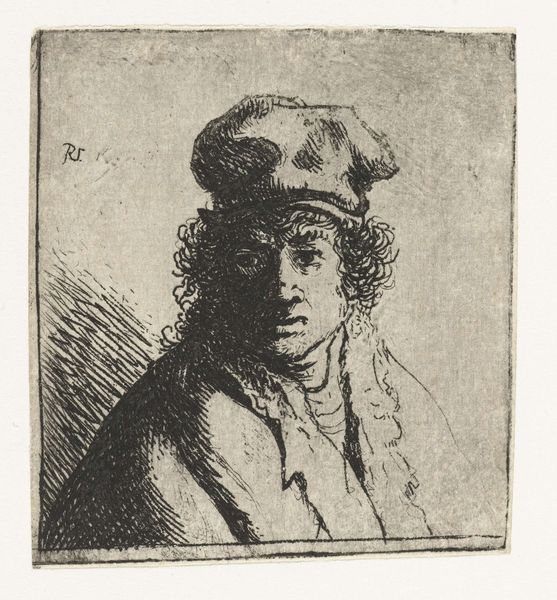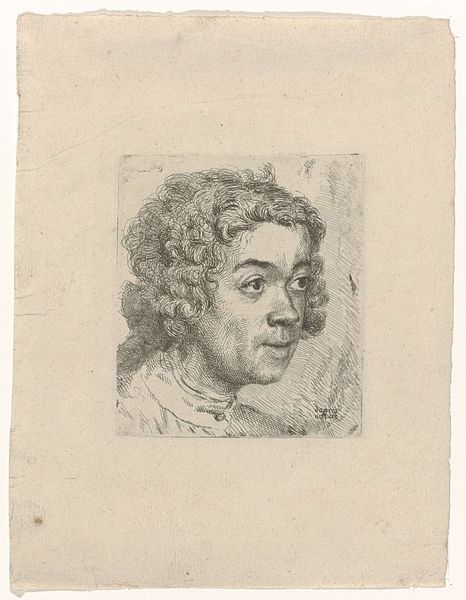
Dimensions: 112 mm (height) x 86 mm (width) (plademaal)
W.A. Müller created this bust portrait of a young man with a hat in 1761. It's a small etching, a medium that allowed for the relatively inexpensive reproduction of images in 18th-century Europe. The man's dress and powdered wig suggest he's a member of the middle or upper class. His pose, however, is rather informal. Resting his head on his hand was a conventional posture for representing melancholy or thoughtfulness at this time. Müller was working in an era of great social and political change. The Enlightenment was challenging traditional hierarchies, and new ideas about individual rights and freedoms were circulating widely. Etchings and engravings played a vital role in disseminating these ideas. To understand this image fully, we need to look at the history of portraiture, the conventions of dress, and the role of printmaking in 18th-century Danish society. These are just some of the resources that help us understand the image as a product of its time.
Comments
No comments
Be the first to comment and join the conversation on the ultimate creative platform.
